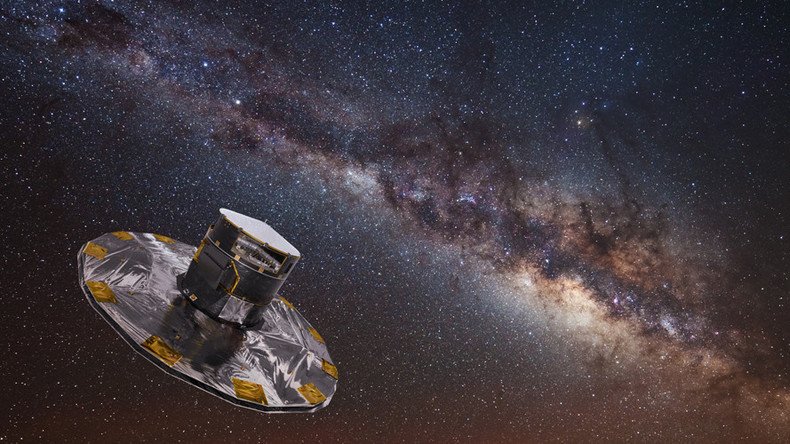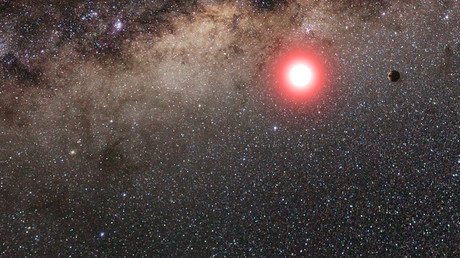Self-teaching neural networks help find mysterious stars tearing through the Milky Way (VIDEO)

Astronomers at the European Space Agency (ESA) combined an “artificial brain” with observations from the advanced Gaia space satellite to discover six stars darting across our galaxy following as-yet-poorly-understood encounters with Milky Way’s supermassive black hole.
“These hypervelocity stars are extremely important to study the overall structure of our Milky Way,” said Elena Maria Rossi, from Leiden University in the Netherlands, who announced the discovery at the European Week of Astronomy and Space Science in Prague last week.
“These are stars that have traveled great distances through the Galaxy but can be traced back to its core – an area so dense and obscured by interstellar gas and dust that it is normally very difficult to observe – so they yield crucial information about the gravitational field of the Milky Way from the center to its outskirts.”
The super-fast stars were discovered about a decade ago, and only 20 had been verified prior to the latest breakthrough, which is necessary if we are to understand if their speeds are determined by collisions near the black hole at the center of our galaxy, or perhaps some other violent gravitational encounter, or the effect of dark matter.
Gaia, launched in 2014, is providing the biggest-ever star survey, documenting over 1.1 billion different stars, but so far has made only one release of data, meaning that to wheedle out the fastest stars, it was best to compare a map of the sky with that made by ESA’s far less comprehensive Hipparcos mission in the 1990s.
That narrowed the list down to 2 million stars, still far too many to compare manually – and this is where massive computing power comes in.
“We chose to use an artificial neural network, which is software designed to mimic how our brain works,” said Tommaso Marchetti, a PhD student at Leiden University and the lead author of the paper published in Monthly Notices of the Royal Astronomical Society that details the discovery.
“After proper ‘training,’ it can learn how to recognize certain objects or patterns in a huge dataset,” said Marchetti. “In our case, we taught it to spot hypervelocity stars in a stellar catalogue like the one compiled with Gaia.”
The dataset was then whittled down using more and more precise mathematical instructions, to make sure no astral slowboats got caught in the net.
“Combining all these data, we found that six stars can be traced back to the Galactic Centre, all with velocities above 360 km/s,” said Marchetti, as cited by the ESA.
The authors say that one of the stars is speeding at 500 km/s – and will eventually burst out of the Milky Way – but they are more interested in the slower ones and the factors that may have affected their speed.
“This result showcases the great potential of Gaia opening up new avenues to investigate the structure and dynamics of our Galaxy,” said Anthony Brown, from Leiden University, another co-author of the study.
But the scientists hope to find many more such stars when Gaia starts producing more datasets, meaning the neural networks will be sieving over a billion stars to locate ones that are moving unusually.
“The sheer number of stars probed by Gaia is an exciting but also challenging opportunity for astronomers, and we are glad to see that they are happily embracing the challenge,” said Timo Prusti, an ESA Gaia project scientist.














